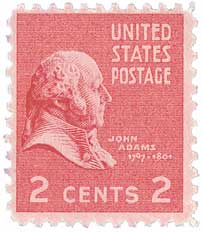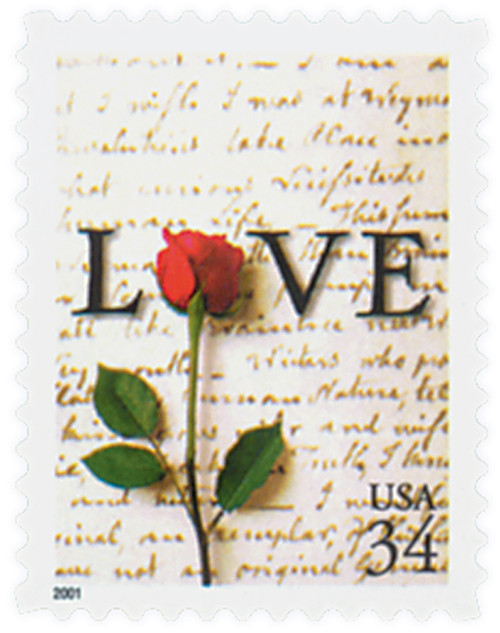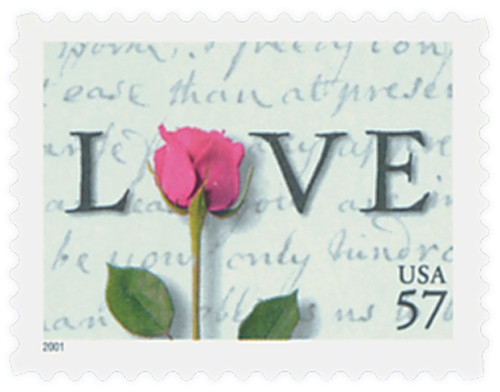
# 3496//3551 - 2001 34-57c Rose and Love Letter, collection of 5 stamps
Get the Complete Love and Roses Set
Long a symbol of devotion, a red rose lies across a handwritten love letter on these 2001 Love stamps. Frequently separated, John and Abigail Adams stayed connected to one another through witty, newsy, passionate letters. The letter on the non-denominated and on the 34¢ stamp is from John Adams to Abigail Smith, before their marriage and before he became the second President of the U.S. The 55¢ stamp has a similar design, but uses a letter from Abigail to John. A rate change late in 2001 brought a reissue of the 55¢ Love design, with the new 57¢ rate displayed in green.
Get the complete set with one easy order – save time and money.
Birth Of John Adams
In his youth, Adams was a bright yet indifferent student who preferred the outdoors to a classroom. At the age of 15, Adams entered Harvard College and graduated in 1755. He taught school for a few years and practiced law. In 1764, Adams married Abigail Smith. The couple had four children who survived infancy.
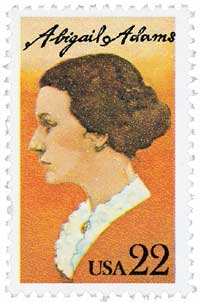
Adams was never a fiery orator or a popular leader in the growing independence movement. However, his essays combined a thorough knowledge of the law, careful analysis of historical perspectives, and inspiring pleas for liberty. Adams successfully defended the British officers who were indicted for their roles in the Boston Massacre. The acquittal was unpopular, but Adams’ respect for the right to an adequate legal defense enhanced his reputation. Adams gained further fame for his opposition to the Stamp Act, and he was elected to the Massachusetts state legislature in 1773.
Adams served as Massachusetts’ delegate to the First and Second Continental Congresses from 1774-78, where he nominated George Washington to serve as the Commander-in-Chief of the Continental Army. By 1776, each colony had been encouraged to write its own state constitution. Adams penned an essay entitled “Thoughts on Government,” which was instrumental in shaping the writing of many of the state constitutions.
Adams was appointed to a committee to draft the Declaration of Independence. Although he was a compelling author, Adams left the writing to Thomas Jefferson and used his abilities to ensure that the document was adopted. For his efforts, Jefferson referred to Adams as “…the great pillar of support to the Declaration of Independence, and its ablest advocate and champion on the floor of the House.”
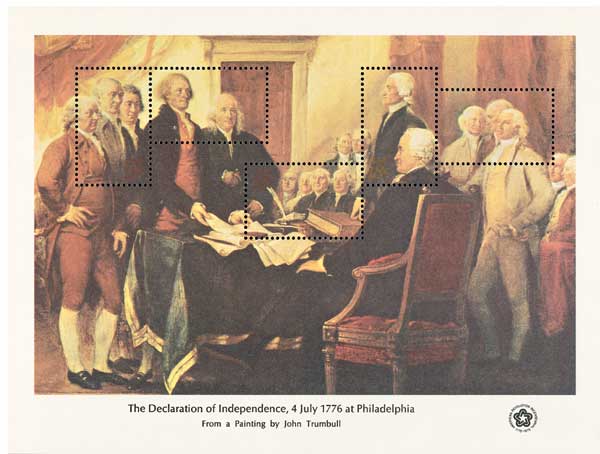
Adams and his son, John Quincy Adams, sailed to France in 1779. During their two-year stay, Adams negotiated a critical alliance with France. France contributed money, munitions, and military force, which helped sustain the Continental Army during the American Revolution. A French naval presence helped ensure victory at the Battle of Yorktown.
In 1779, Congress chose Adams to negotiate treaties for peace and commerce with Great Britain. He served as the US envoy to France and the Netherlands from 1780 to 1785 and negotiated the 1783 Treaty of Paris that ended the Revolutionary War.
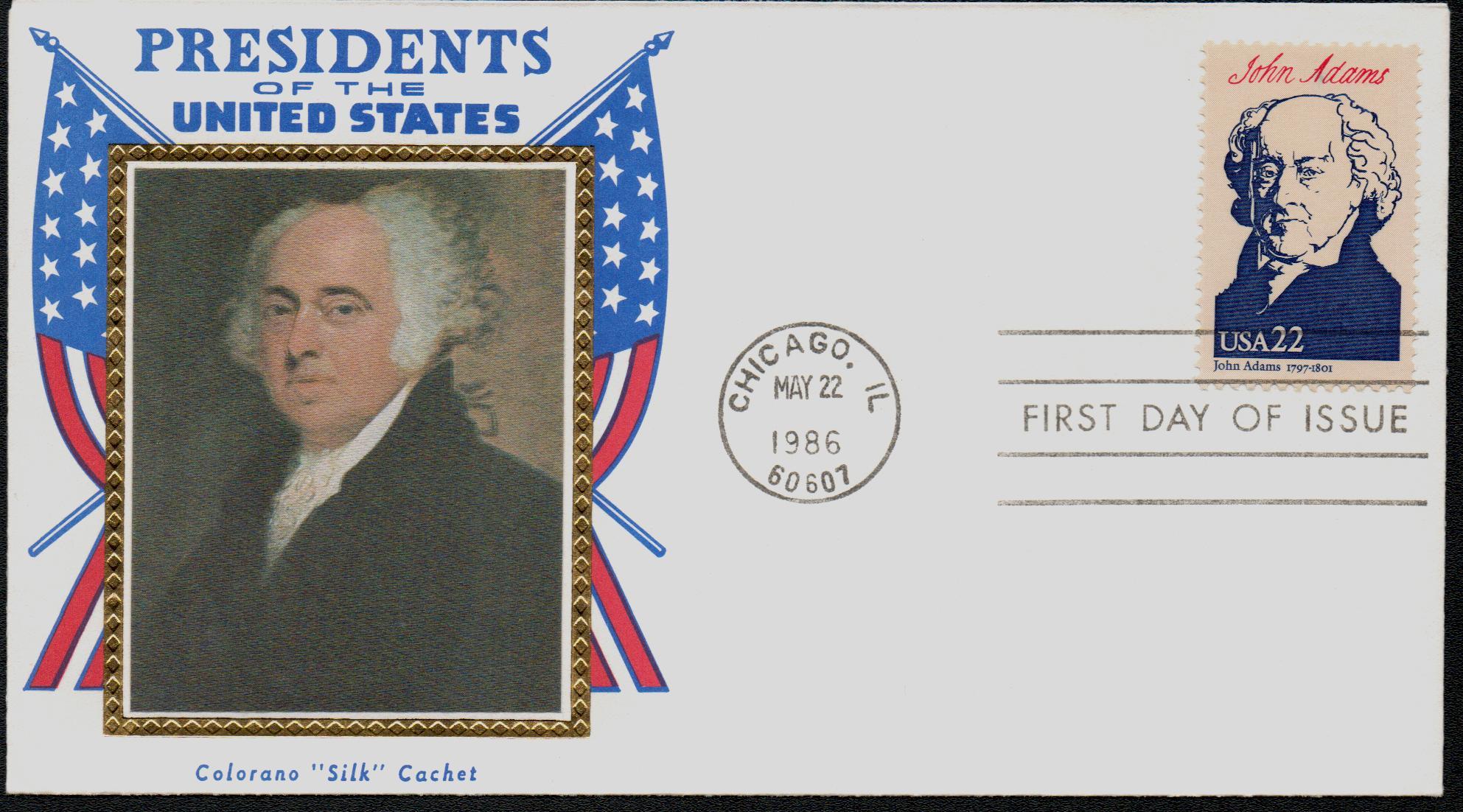
In 1785, Adams was selected to serve as the US Minister to Britain. Upon his return, Adams wrote the Massachusetts state constitution. Adams was also influential in writing the US Constitution, with his finest contribution being the concept of three branches of federal government: executive, legislative, and judicial.
George Washington was the unanimous choice as President in the 1789 election. Adams placed second, becoming our nation’s first vice president. Washington did not seek his vice president’s input on policy or legal matters, and Adams lamented, “My country has in its wisdom contrived for me the most insignificant office that ever the invention of man contrived or his imagination conceived.” Nevertheless, Adams played an active role in the Senate, where he cast 31 tie-breaking votes and influenced the location of the national capital. Adams won his re-election bid in 1792.

Political parties began to form during Adams’ term in office. Alexander Hamilton, a brilliant man whose foreign birth made him ineligible for the nation’s highest office, led the Federalist Party. Thomas Jefferson, who advocated strong relations with France, led the opposing Democratic-Republican Party. Adams aligned himself with the Federalist Party and was selected to be its presidential nominee in 1796. By a margin of only 3 votes, Adams won the presidency and Thomas Jefferson became his vice president. It was the only time in US history that opponents held the nation’s two highest offices from different political parties.
In a move considered to be one of his greatest political mistakes, Adams kept George Washington’s entire Cabinet. The group’s allegiance was to Alexander Hamilton, which would weaken Adams’ administration. A deep rift formed between the two men’s factions within the Federalist Party.

The Quasi-War was a naval battle between the United States and France. Fought between 1798 and 1800, the undeclared war began with France’s seizure of American commercial ships that were trading with England. In 1796, France refused to receive the new US Minister. The following year, Adams reported on France’s refusal and reminded Congress of the need to “place our country in a suitable posture of defense.” Congress then authorized Adams to acquire and man ships for war with France.
Congress officially rescinded its treaties with France, and the Quasi-War began on July 7, 1798. Four days later, the United States Navy and Marine Corps were created to help bring about the defeat of France and the restoration of America’s commercial shipping. Called upon to lead the Army once again, General George Washington insisted Alexander Hamilton be appointed to be his assistant, to the chagrin of President Adams.
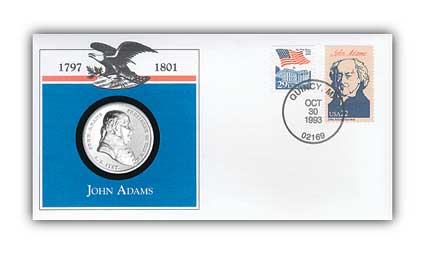
Even though it had once seemed full-scale war was inevitable, the Quasi-War ended with the Treaty of Mortefontaine in 1800. However, Adams’ reputation and political career had been deeply damaged. He battled a rift in his own Federalist party, lost control of the US Army to Hamilton, a political opponent who led the breakaway “High Federalist” movement and served with a vice president from an opposing political party.
The 1799 death of George Washington shattered any remnants of unity within the Federalist Party, leaving Adams vulnerable as he sought re-election in 1800. Once ardent patriots who worked together to free a great nation from the tyranny of King George III, Thomas Jefferson and John Adams waged a bitter battle for the presidency. When the electoral votes were counted, Jefferson won by a margin of 73 to 65 votes.
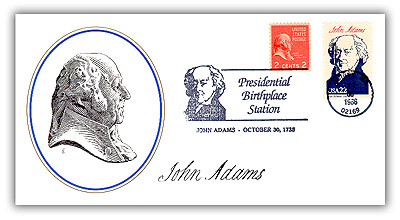
Deeply depressed, Adams retired to his farm in Quincy without attending Jefferson’s inauguration. In 1804, the 12th Amendment to the US Constitution was passed. The Amendment altered the electoral process, doing away with the system that allowed members of opposing political parties to hold the two highest offices.
Adams lived to see his son, John Quincy Adams, win the presidential election in 1825. In his later years, Adams reconciled with Jefferson and they corresponded with each other for the rest of their lives. In fact, both men died on the same day, July 4, 1826.
Get the Complete Love and Roses Set
Long a symbol of devotion, a red rose lies across a handwritten love letter on these 2001 Love stamps. Frequently separated, John and Abigail Adams stayed connected to one another through witty, newsy, passionate letters. The letter on the non-denominated and on the 34¢ stamp is from John Adams to Abigail Smith, before their marriage and before he became the second President of the U.S. The 55¢ stamp has a similar design, but uses a letter from Abigail to John. A rate change late in 2001 brought a reissue of the 55¢ Love design, with the new 57¢ rate displayed in green.
Get the complete set with one easy order – save time and money.
Birth Of John Adams
In his youth, Adams was a bright yet indifferent student who preferred the outdoors to a classroom. At the age of 15, Adams entered Harvard College and graduated in 1755. He taught school for a few years and practiced law. In 1764, Adams married Abigail Smith. The couple had four children who survived infancy.

Adams was never a fiery orator or a popular leader in the growing independence movement. However, his essays combined a thorough knowledge of the law, careful analysis of historical perspectives, and inspiring pleas for liberty. Adams successfully defended the British officers who were indicted for their roles in the Boston Massacre. The acquittal was unpopular, but Adams’ respect for the right to an adequate legal defense enhanced his reputation. Adams gained further fame for his opposition to the Stamp Act, and he was elected to the Massachusetts state legislature in 1773.
Adams served as Massachusetts’ delegate to the First and Second Continental Congresses from 1774-78, where he nominated George Washington to serve as the Commander-in-Chief of the Continental Army. By 1776, each colony had been encouraged to write its own state constitution. Adams penned an essay entitled “Thoughts on Government,” which was instrumental in shaping the writing of many of the state constitutions.
Adams was appointed to a committee to draft the Declaration of Independence. Although he was a compelling author, Adams left the writing to Thomas Jefferson and used his abilities to ensure that the document was adopted. For his efforts, Jefferson referred to Adams as “…the great pillar of support to the Declaration of Independence, and its ablest advocate and champion on the floor of the House.”

Adams and his son, John Quincy Adams, sailed to France in 1779. During their two-year stay, Adams negotiated a critical alliance with France. France contributed money, munitions, and military force, which helped sustain the Continental Army during the American Revolution. A French naval presence helped ensure victory at the Battle of Yorktown.
In 1779, Congress chose Adams to negotiate treaties for peace and commerce with Great Britain. He served as the US envoy to France and the Netherlands from 1780 to 1785 and negotiated the 1783 Treaty of Paris that ended the Revolutionary War.

In 1785, Adams was selected to serve as the US Minister to Britain. Upon his return, Adams wrote the Massachusetts state constitution. Adams was also influential in writing the US Constitution, with his finest contribution being the concept of three branches of federal government: executive, legislative, and judicial.
George Washington was the unanimous choice as President in the 1789 election. Adams placed second, becoming our nation’s first vice president. Washington did not seek his vice president’s input on policy or legal matters, and Adams lamented, “My country has in its wisdom contrived for me the most insignificant office that ever the invention of man contrived or his imagination conceived.” Nevertheless, Adams played an active role in the Senate, where he cast 31 tie-breaking votes and influenced the location of the national capital. Adams won his re-election bid in 1792.

Political parties began to form during Adams’ term in office. Alexander Hamilton, a brilliant man whose foreign birth made him ineligible for the nation’s highest office, led the Federalist Party. Thomas Jefferson, who advocated strong relations with France, led the opposing Democratic-Republican Party. Adams aligned himself with the Federalist Party and was selected to be its presidential nominee in 1796. By a margin of only 3 votes, Adams won the presidency and Thomas Jefferson became his vice president. It was the only time in US history that opponents held the nation’s two highest offices from different political parties.
In a move considered to be one of his greatest political mistakes, Adams kept George Washington’s entire Cabinet. The group’s allegiance was to Alexander Hamilton, which would weaken Adams’ administration. A deep rift formed between the two men’s factions within the Federalist Party.

The Quasi-War was a naval battle between the United States and France. Fought between 1798 and 1800, the undeclared war began with France’s seizure of American commercial ships that were trading with England. In 1796, France refused to receive the new US Minister. The following year, Adams reported on France’s refusal and reminded Congress of the need to “place our country in a suitable posture of defense.” Congress then authorized Adams to acquire and man ships for war with France.
Congress officially rescinded its treaties with France, and the Quasi-War began on July 7, 1798. Four days later, the United States Navy and Marine Corps were created to help bring about the defeat of France and the restoration of America’s commercial shipping. Called upon to lead the Army once again, General George Washington insisted Alexander Hamilton be appointed to be his assistant, to the chagrin of President Adams.

Even though it had once seemed full-scale war was inevitable, the Quasi-War ended with the Treaty of Mortefontaine in 1800. However, Adams’ reputation and political career had been deeply damaged. He battled a rift in his own Federalist party, lost control of the US Army to Hamilton, a political opponent who led the breakaway “High Federalist” movement and served with a vice president from an opposing political party.
The 1799 death of George Washington shattered any remnants of unity within the Federalist Party, leaving Adams vulnerable as he sought re-election in 1800. Once ardent patriots who worked together to free a great nation from the tyranny of King George III, Thomas Jefferson and John Adams waged a bitter battle for the presidency. When the electoral votes were counted, Jefferson won by a margin of 73 to 65 votes.

Deeply depressed, Adams retired to his farm in Quincy without attending Jefferson’s inauguration. In 1804, the 12th Amendment to the US Constitution was passed. The Amendment altered the electoral process, doing away with the system that allowed members of opposing political parties to hold the two highest offices.
Adams lived to see his son, John Quincy Adams, win the presidential election in 1825. In his later years, Adams reconciled with Jefferson and they corresponded with each other for the rest of their lives. In fact, both men died on the same day, July 4, 1826.




